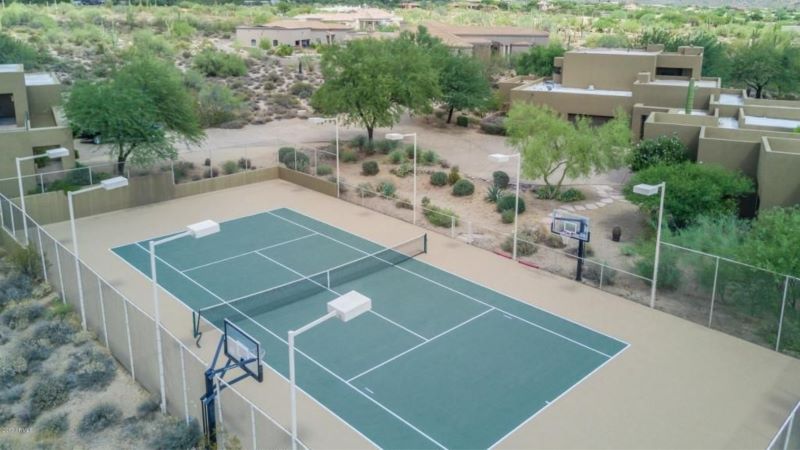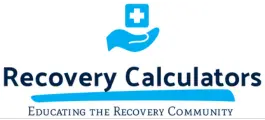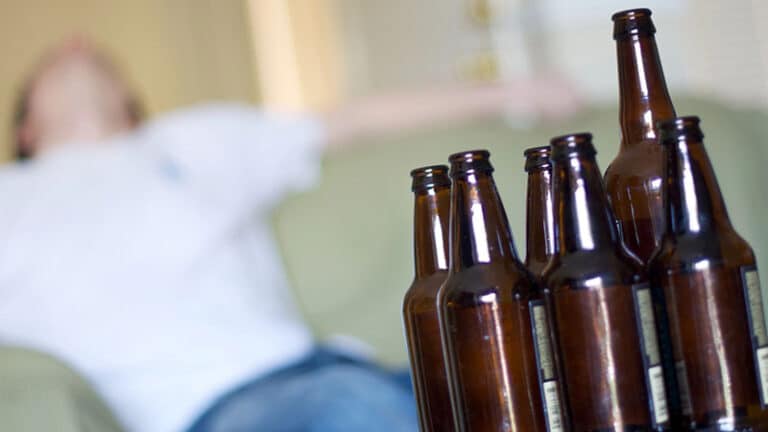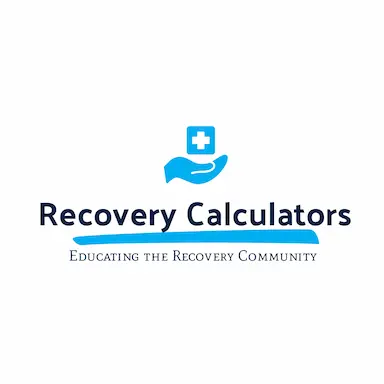Alcohol can have severe effects on the body, including muscle breakdown. Alcoholic rhabdomyolysis is a serious condition where excessive alcohol use damages skeletal muscle fibers. This can release harmful substances into the bloodstream, leading to kidney failure and other life-threatening complications.
Recognizing the symptoms and seeking treatment early can prevent long-term health issues.
Questions answered in this article:
Our Addiction Treatment Centers

Scottsdale Rehab
Luxury Personalized Rehab

HART Rehab
Holistic Luxury Personalized Rehab

Scottsdale Detox
Luxury Medical Detox
What is Rhabdomyolysis?
Rhabdomyolysis is a condition where muscle tissue breaks down rapidly. The damaged muscle releases proteins like myoglobin into the blood. These proteins can clog the kidneys, reducing urine output and increasing the risk of kidney failure.
Common causes of rhabdomyolysis include:
- Crushing injury or trauma to muscles
- High-intensity exercise beyond physical limits
- Binge drinking and alcohol toxicity
- Drug use, including statins and stimulants
- Infections and metabolic disorders
When alcohol is the cause, the condition is called alcohol-induced rhabdomyolysis. It is often linked to acute alcohol poisoning, prolonged immobility, and nutritional deficiencies.
How Does Alcohol Cause Rhabdomyolysis?
Alcohol-induced rhabdomyolysis arises from both short-term heavy intoxication and long-term alcohol abuse. Below is an overview of how alcohol affects muscles:
1. Direct Muscle Toxicity
Long-term alcohol use damages skeletal muscle fibers, leading to muscle weakness and breakdown. Alcohol-induced rhabdomyolysis occurs when excessive drinking causes direct injury to muscle cells.
2. Prolonged Immobility
Binge drinking can result in unconsciousness. If a person remains in one position for too long, the pressure on their muscles can cause induced rhabdomyolysis. This is similar to a crushing injury and can lead to severe muscle swelling and breakdown.
3. Dehydration and Electrolyte Imbalance
Alcohol dehydrates the body and reduces urine output. It also causes electrolyte imbalances, particularly low potassium and phosphate levels. These imbalances make it easier for muscles to break down under stress.
4. Seizures from Alcohol Withdrawal
In some cases, acute alcohol withdrawal triggers seizures. The intense muscle contractions during seizures can damage muscle tissue and increase the risk of rhabdomyolysis.
Alcoholic Rhabdomyolysis Symptoms
The symptoms of alcohol-induced rhabdomyolysis can appear within hours or days after excessive alcohol consumption. Common symptoms include:
- Severe muscle pain and weakness, especially in the legs, arms, or back.
- Muscle swelling due to fluid buildup in damaged areas.
- Dark-colored urine that appears cola or tea-like, caused by myoglobin release.
- Decreased urine output, a sign of kidney damage.
- Fatigue and confusion due to metabolic imbalances.
- Nausea and vomiting, often linked to electrolyte disturbances.
Irregular heartbeat, caused by high potassium levels (mg/dL measurement above normal range).
Complications of Alcoholic Rhabdomyolysis
If left untreated, these symptoms can progress to life-threatening complications:
Acute Kidney Failure
As muscle fibers break down, myoglobin and other proteins accumulate in the kidneys. This can block kidney function, leading to acute kidney failure. If urine output drops significantly, dialysis may be required.
Electrolyte Imbalances
High potassium levels (hyperkalemia) can cause dangerous heart arrhythmias. Blood tests measuring mg/dL of potassium and sodium help detect imbalances.
Compartment Syndrome
Severe muscle swelling can cut off blood flow, leading to tissue death. This requires emergency surgery to relieve pressure.
Diagnosing Alcohol-Induced Rhabdomyolysis
Diagnosis for this medical condition involves a combination of clinical assessment, laboratory tests, and sometimes, imaging studies.
Clinical Assessment
Doctors assess the history of alcohol use and provide a physical examination focusing on muscle pain and weakness. Patients will also be screened for signs of alcohol intoxication or withdrawal.
Laboratory Tests
Healthcare professionals also carry out different laboratory tests to assess the patients. These may include:
- Creatine Kinase (CK) Blood Tests: Elevated serum CK levels are the most sensitive indicator of muscle damage. Levels typically need to be more than five times the upper limit to confirm rhabdomyolysis.
- Myoglobin Urine Test: This detects myoglobin levels to support the diagnosis.
- Electrolyte Panels: This assesses an imbalance in electrolytes, such as high potassium levels.
Imaging and Other Tests
Imaging studies are rarely used for diagnosis, but MRI scans can help assess muscle damage and CT scans can assist with neurological concerns. Additionally, a muscle biopsy can also be performed, especially if there is suspicion of underlying muscle disease.
Treatment for Alcoholic Rhabdomyolysis
Early treatment can prevent serious complications. Hospitalization is often required for monitoring and supportive care.
- Intravenous (IV) Fluids: Large amounts of IV fluids help flush myoglobin from the kidneys. This reduces the risk of kidney failure and maintains urine output.
- Electrolyte Management: Doctors monitor mg/dL levels of potassium, sodium, and calcium. Severe imbalances are corrected with medications or dialysis.
- Dialysis: If the kidneys fail to clear toxins, dialysis is used to filter the blood.
- Monitoring for Complications: Patients are closely monitored for life-threatening complications like heart arrhythmias or compartment syndrome.
How To Prevent Alcohol-Induced Rhabdomyolysis
Preventing alcoholic rhabdomyolysis involves addressing both the immediate risks associated with alcohol consumption and the long-term effects of alcohol abuse.
Immediate Prevention Strategies
- Avoid Binge Drinking: Limit alcohol intake to prevent episodes of heavy drinking that can lead to immobilization or coma, which are common triggers for rhabdomyolysis.
- Stay Hydrated: Ensure adequate fluid intake, especially during and after alcohol consumption, to maintain hydration levels.
- Monitor for Signs of Intoxication: Be aware of signs of severe intoxication, such as loss of consciousness, and seek medical help if they occur.
Long-Term Prevention Strategies
- Address Alcohol Use Disorder: Engage in treatment programs like Partial Hospitalization Programs (PHP) or Intensive Outpatient Programs (IOP) to manage alcohol use disorder.
- Maintain Electrolyte Balance: Regularly check electrolyte levels and address imbalances promptly, as chronic disturbances can contribute to muscle damage.
- Avoid Concurrent Substance Use: Refrain from using other substances that can exacerbate muscle damage, such as certain drugs or medications.
General Health Measures
- Regular Health Check-Ups: Regularly monitor overall health, including liver function and muscle health, to identify early signs of alcohol-related damage.
- Nutritional Support: Ensure adequate nutrition and consider supplements to support muscle health, such as vitamins and minerals.
Alcohol Addiction Treatment
Chronic alcohol abuse not only increases the risk of rhabdomyolysis but also leads to numerous other health complications, including liver disease, heart problems, and neurological damage. Seeking alcohol addiction treatment can prevent these serious conditions and improve overall health.
For people struggling with alcohol abuse and addiction, help is always available. Treatment options include detox programs, therapy, and support groups that help individuals regain control over their lives.
If you or a loved one struggles with alcohol dependence, seeking professional help is a crucial step toward recovery and long-term wellness.


